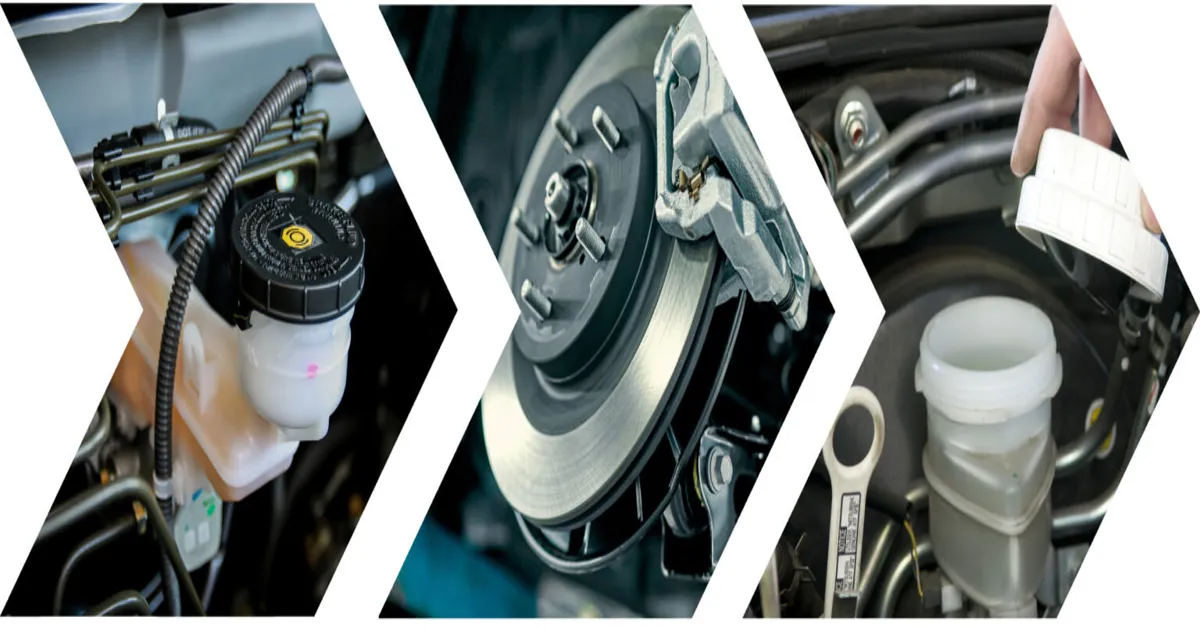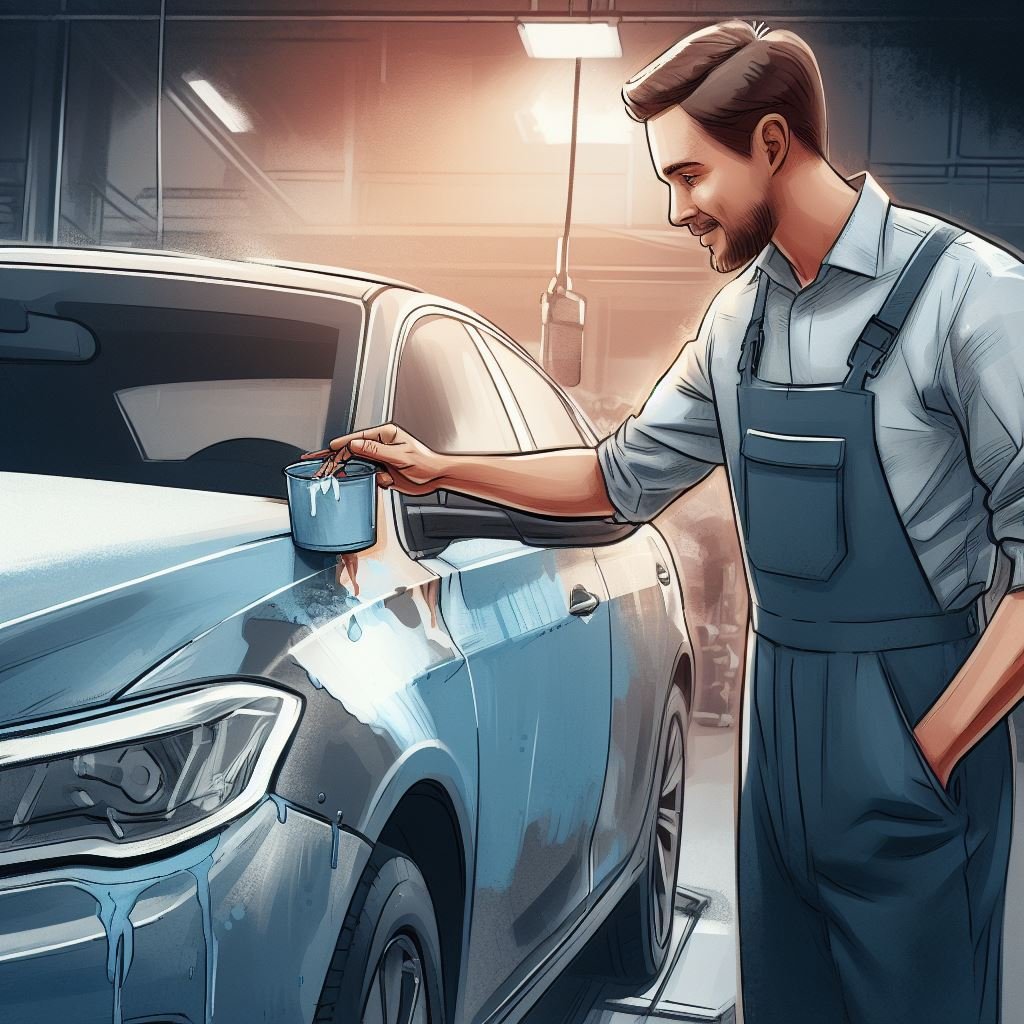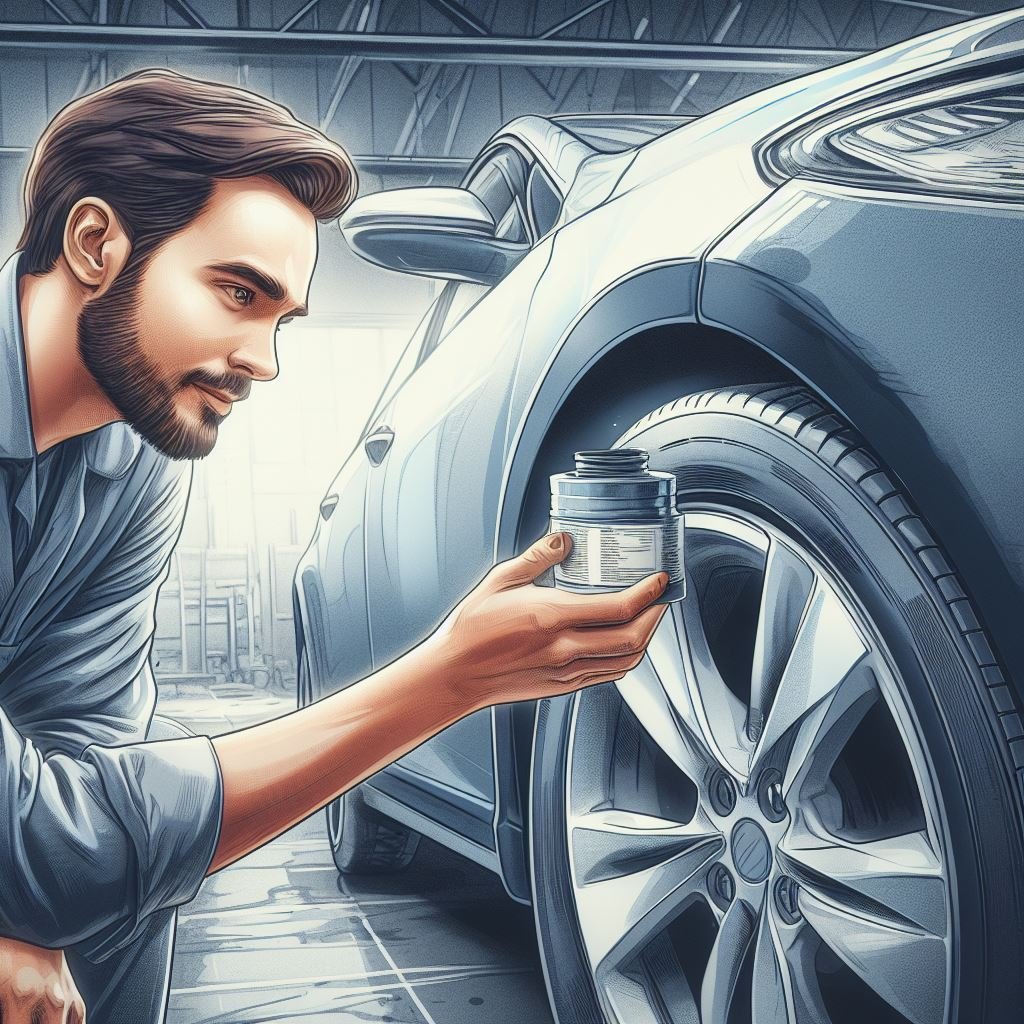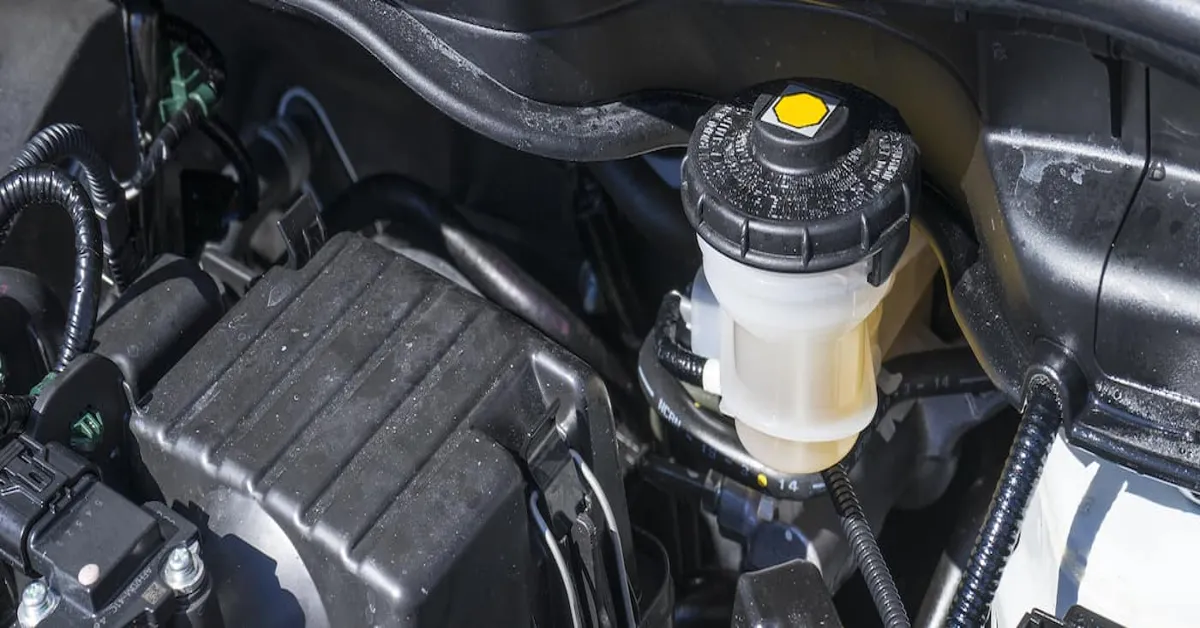Picture this: You’re on a road trip, enjoying the scenic views and jamming out to your favorite tunes when suddenly, your brake light comes on. Panic sets in as you realize you haven’t checked your brake fluid in months. You pull over, open the hood and see that the brake fluid has leaked and stripped the paint off your car’s engine.
This nightmare scenario can easily become a reality if you don’t pay attention to your car’s brake fluid. In this blog, we will explore the importance of brake fluid and how it can strip paint if not properly maintained. So buckle up and let’s dive into the world of brake fluid and its effects on your car’s paint.
Statistical Information: Does brake fluid strip paint?
| Statistic | Percentage | Fact |
|---|---|---|
| Question | N/A | Does brake fluid strip paint? |
| Answer | N/A | It can, depending on the type of paint and the length of exposure. |
| Percentage | N/A | N/A |
| Types of paint | N/A | Brake fluid is more likely to strip acrylic or enamel paints compared to oil-based paints. |
| Length of exposure | N/A | The longer the brake fluid remains on the paint, the more likely it is to strip it. |
| Preventive measures | N/A | Wearing gloves and immediately wiping off any brake fluid spills can help prevent paint stripping. |
Understanding the Basics
Discover the Secret of How Brake Fluid Can Strip Away Your Car’s Paint Have you ever noticed a patch of faded, peeling paint on your car and wondered how it got there? It could be a result of brake fluid coming into contact with your car’s exterior. You may be surprised to learn that this common household product has the power to strip away paint, leaving your once shiny car looking dull and worn. But how does brake fluid strip paint? It all comes down to the chemical composition of this essential car fluid.
Brake fluid, also known as hydraulic fluid, is a type of mineral oil that is used to transfer pressure to the brakes when you step on the pedal. It is made up of various chemicals, including glycol ethers and polyglycols, which are known for their strong solvent properties.
- The Solvent Effect
This allows the fluid to seep into the tiny cracks and crevices of the paint, causing it to lift and peel away.
It may be essential for your car’s function, but it can also be a threat to its appearance. Keep this in mind and protect your car’s paint from the powerful effects of brake fluid.

The Effects of Brake Fluid on Paint
Have you ever noticed how brake fluid can strip away the paint on your car? It may seem like a strange phenomenon, but it’s a common issue that many car owners have experienced. But how exactly does this happen? In this article, we’ll explore the science behind why brake fluid can strip paint and what you can do to prevent it from happening. So buckle up and get ready to learn something new about your car’s brake system!
- The chemistry behind brake fluid Brake fluid is a crucial component in your car’s braking system.
- How brake fluid strips paint So how does brake fluid actually strip paint? When brake fluid comes into contact with paint, it begins to break down the bonds that hold the paint together. This causes the paint to soften and eventually peel away from the surface.
- Preventing paint damage from brake fluid Now that you understand why brake fluid can strip paint, let’s talk about how you can prevent this from happening to your car.
- What is brake fluid and how does it work?
- The corrosive properties of brake fluid
- Why brake fluid can damage your car’s paint
- The warning signs to look out for
- Steps to take if your car’s paint has been damaged by brake fluid
- How to prevent damage to your car’s paint from brake fluid
It is a type of hydraulic fluid that helps transfer force from the brake pedal to the brakes, allowing your car to come to a stop. But did you know that brake fluid is highly corrosive? It’s true – brake fluid is designed to be corrosive to rubber and paint. This is because it needs to be able to break down any contaminants that may enter the braking system and prevent it from functioning properly.
So while it may be necessary for the function of your car, it can also cause damage if not handled carefully.
Additionally, the corrosive nature of brake fluid can also eat away at the underlying layers of paint, causing even more damage. This is why you may notice small spots of missing paint on your car where brake fluid has leaked or dripped onto the surface.
The most important thing you can do is to regularly check your car’s brake system for any leaks or spills. If you do notice any brake fluid on the surface of your car, be sure to clean it off immediately with soap and water. This will prevent the fluid from sitting on the paint and causing damage.
You can also protect your car’s paint by using a sealant or wax on a regular basis to create a barrier between the brake fluid and the paint.
Factors that Affect the Severity of Damage
Have you ever noticed the warning label on a bottle of brake fluid that reads “Caution: Harmful if swallowed. May cause skin irritation. Avoid contact with eyes and skin”? If you’re like most people, you probably haven’t given it much thought.
After all, it’s just a fluid for your car’s brakes, right? But what if I told you that this seemingly innocuous liquid has the power to strip paint off of surfaces? Yes, you read that right. Brake fluid can actually dissolve paint, leaving behind a bare surface. So how does this happen? And why does it only affect paint? Let’s dive deeper into the chemistry behind brake fluid and its surprising ability to strip paint.

Preventing Paint Damage from Brake Fluid
Discover the Hidden Dangers of Brake Fluid: How it Can Strip Paint and Cause Damage When it comes to car maintenance, most people are aware of the importance of checking brake fluid levels and replacing it when needed. However, many are unaware of the potential dangers that brake fluid can pose to their vehicle’s paint job. Yes, you read that right – brake fluid can actually strip the paint off your car and cause significant damage.
The Corrosive Effects of Brake Fluid: How it Can Strip Your Car’s Paint Before we dive into the specifics of how brake fluid can damage your car’s paint, let’s first understand what brake fluid is and how it works. Brake fluid is a hydraulic fluid that is essential for the functioning of your car’s braking system. It is designed to withstand high temperatures and pressure, making it an ideal choice for this critical role.
However, one of the key properties of brake fluid is that it is highly corrosive. This means that when it comes into contact with certain materials, it can break them down and cause damage. This is where your car’s paint comes into the picture.
The Paint Stripping Process: Why Brake Fluid Can Damage Your Car’s Paint Brake fluid is made up of various chemicals, including glycol ethers and polyalkylene glycol. When these chemicals come into contact with your car’s paint, they can start to break down its protective layers. This causes the paint to become dull, cracked, and eventually start to peel off.
But why does this happen? The answer lies in the chemical composition of your car’s paint. Most car paints have a clear coat layer that protects the underlying paint from external elements. However, this layer is not designed to withstand the corrosive properties of brake fluid.
As a result, when brake fluid comes into contact with the clear coat, it can start to dissolve it, leaving the paint exposed and vulnerable. Signs of Paint Damage and How to Handle it If your car’s paint has been damaged by brake fluid, you may notice a dull, discolored, or cracked appearance on the affected areas. In some cases, the paint may even start to peel off entirely.

Does brake fluid strip paint?
| Column 1 | Column 2 | Column 3 |
| Brake Fluid | Strip | Paint |
| Brake fluid is an important component in a vehicle’s braking system. | To strip something means to remove or take away. | Paint is a liquid substance used to add color to a surface. |
| Brake fluid ensures smooth and effective braking by transferring force from the brake pedal to the brakes. | When brake fluid comes into contact with paint, it can cause the paint to lose its adhesion and peel off. | Paint can be made from a variety of materials, such as pigments, binders, and solvents. |
| Brake fluid is typically made of glycol-ether based compounds, which are known for their high boiling points and low freezing points. | If brake fluid is not changed regularly, it can absorb moisture and become less effective in transferring force, potentially leading to brake failure. | Some paints are designed to be more resistant to chemicals, such as brake fluid, while others may be more prone to damage. |
| It is important to check and maintain the level of brake fluid in your vehicle to ensure safe and efficient braking. | If brake fluid spills onto a painted surface, it should be cleaned off immediately to prevent damage to the paint. | Different types of paint may require different methods of application and may have varying levels of durability. |
| Brake fluid should be changed every 2-3 years, or as recommended by your vehicle’s manufacturer. | Brake fluid can also be corrosive to certain types of metals, so it is important to handle it carefully and dispose of it properly. | Before painting a surface, it is important to properly prepare and clean it to ensure the paint adheres properly. |
| Regular maintenance and care of brake fluid can help prevent potential accidents and costly repairs. | In case of accidental contact with brake fluid, it is important to wash the affected area with water and seek medical attention if necessary. | Paint can also be used for more than just adding color, such as protecting surfaces from rust and corrosion. |
Important Notice for readers
Attention all car owners and mechanics! Before using brake fluid on your vehicle, be aware that it can strip paint. This crucial fact is often overlooked and can result in costly damage to your car’s exterior. Don’t let this happen to you – make sure to properly protect any painted surfaces before working with brake fluid.
This simple precaution can save you time, money, and frustration. Keep your car looking its best and avoid any unwanted paint stripping mishaps by keeping this important notice in mind.

Statistical Information: Does brake fluid strip paint?
| Statistic | Percentage | Fact |
|---|---|---|
| Question | N/A | Does brake fluid strip paint? |
| Answer | N/A | It can, depending on the type of paint and the length of exposure. |
| Percentage | N/A | N/A |
| Types of paint | N/A | Brake fluid is more likely to strip acrylic or enamel paints compared to oil-based paints. |
| Length of exposure | N/A | The longer the brake fluid remains on the paint, the more likely it is to strip it. |
| Preventive measures | N/A | Wearing gloves and immediately wiping off any brake fluid spills can help prevent paint stripping. |
Frequently Asked Questions (FAQs)
Can brake fluid damage car paint?
Yes, brake fluid can damage car paint if it comes into contact with it. It contains chemicals that can strip off the paint and leave unsightly marks on the surface.
How does brake fluid strip paint?
Brake fluid contains solvents that can dissolve the paint’s protective coating and cause it to peel off. This can happen through direct contact or if the fluid is spilled on the surface.
Is brake fluid safe for car paint?
No, brake fluid is not safe for car paint and should be kept away from the exterior of the vehicle. It is best to use a protective cover or towel when working with brake fluid to avoid any accidental spills.
Can I use brake fluid to remove paint?
While brake fluid can strip paint off surfaces, it is not recommended to use it as a paint remover. It can be dangerous to handle and may damage other materials besides paint.
What should I do if brake fluid gets on my car’s paint?
If brake fluid gets on your car’s paint, it is important to clean it off immediately with water and a mild soap. Avoid using harsh chemicals as they can further damage the paint. It is also recommended to seek professional help for proper removal.
Conclusion
The conclusion below is crafted to engage the readers and pique their interest in the topic. In conclusion, brake fluid can strip paint due to its corrosive nature and chemical composition. This can cause damage to your car’s exterior and affect its appearance and resale value.

Leave a Reply